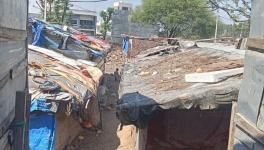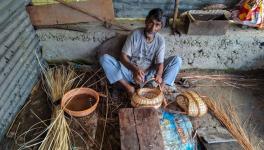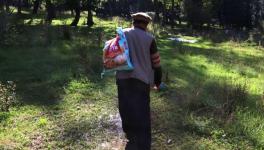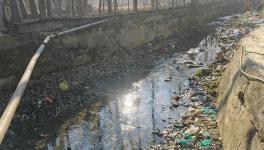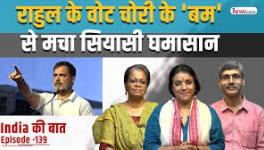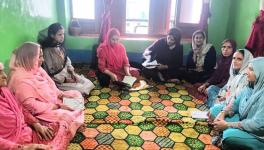J&K: Hasty Centre Lumps Yet Another Flawed Intervention
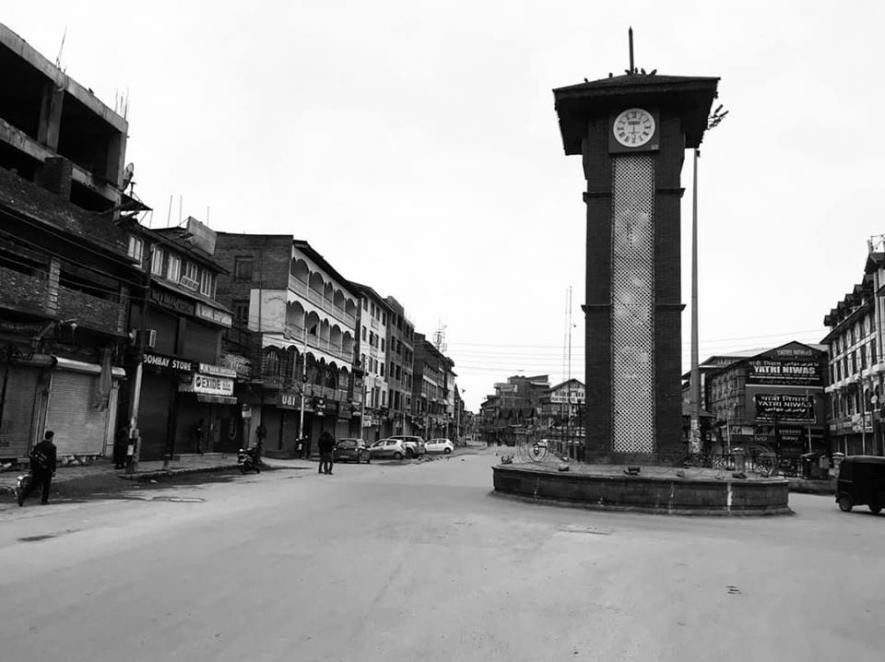
“Now there will be a complete integration of J&K,” uttered the senior police officer who escorted us from Srinagar airport to the house of Mohammad Yousuf Tarigami, a four-time MLA and CPI(M) leader in J&K – he was under house arrest at the time. Sitaram Yechury, general secretary of the CPI(M) was allowed to visit Jammu and Kashmir and meet Tarigami due to a Supreme Court order on his ‘habeas corpus’ writ petition.
I had accompanied Yechury. It was the first entry of a political leader into Kashmir after the abrogation of Articles 370 and 35A, since August 5, 2019. Little did the police official realise then that this so-called integration and the scuttling of J&K’s ‘autonomy’ will eventually rob its residents of even the minimum guaranteed provisions of decision making. Even the decision to levy a property tax, which is a state subject, is now being taken by the Centre.
Who Decides for Whom?
The ‘extraordinary Gazette notification’ from the Ministry of Home Affairs, Union of India, dated October 5, 2020, explicitly mentions the provision to collect property tax from urban centres in J&K. It is rather bizarre that the encroachment in decision-making is not just limited to provisions of the state legislature, but has even happened in the domain of the urban local bodies. Under The Jammu and Kashmir Reorganisation Act, 2019, Section 32 empowers the state legislature to deal with all matters except public order and police. Yet, the central government has, by the gazette on October 5, while using the powers given by Reorganisation Act, amended the Jammu and Kashmir Municipal Act, 2000, and imposed new property tax regulations.
Urban development, a state subject, has been usurped by the Union Government. The Centre could have at least waited for elections to the J&K legislature and allowed them to delve into it.
New Delhi is now deciding the trajectory of urban development for J&K residents in the region! The move smacks of treating J&K as a colony, rather than integrating the region with the mainland.
The entire process to levy property tax is faulty. Firstly, the elected representatives of city governments (i.e. the urban local bodies) were not consulted during the process. But even before that, according to the 74th constitutional provision which embarks on the functions of city development in the country, the basic premise – the will of the people through its representatives is of utmost importance. Let us take a look at how the elected representatives in the urban centres are placed. In Kashmir valley, nearly 50% posts of elected representatives are still vacant. Those who were elected have not polled more than ten per cent of the total votes. Where is the will of the people?
Take Anantnag district, for example. It has ten ULBs and of the total 139 ward councillor seats, nearly 56% (40.3 per cent) are lying vacant. Similarly, in Kulgam district, 26 out of 40 seats are vacant (65%). In Pulwama, out of 69, 58 seats are vacant (84.1 per cent); in Shopian 52.9% seats arevacant; in Budgam, out of 72, 33 are vacant (45.8%); in Barbarella, out of 93, 35 are lying vacant (37.6%); likewise in Kupwara and Bandipora, nearly 30% of the seats are lying vacant.
As is evident from the list, a large number of these city governments are unrepresented. The foremost thing that the government must do is engage people in the decision-making process. The vacant posts must be filled through genuine elections. It is only on top of this can other layers of urban governance come in. Although elections to local bodies were to take place in Jammu, even in this region, there has been no consultation process to levy the property tax.
Secondly, the power to legislate in J&K lies with the legislature. As stated above, whether property tax should be levied must be decided by it, the only competent authority under the J & K Reorganization Act. And since urban development is a state subject, just by keeping the assembly at bay and usurping the powers of the J&K legislature to give to the President of India and then promulgating such obfuscating laws will only further alienate the people. The move may hold water technically, but it is an attack on the people of J&K politically.
The coercion will not help. The Centre must first initiate a dialogue with the people and the political parties of the region, and hold elections to the J&K legislature. The Union Government should also keep in mind petitions challenging the abrogation of Article 370 and Article 35 A are pending in the Supreme Court. Hence, given the backdrop, to rush matters would only prove perilous to the government and the residents of the region.
Provisions: Copy and Paste Model
Aside from the faulty process of the enactment of the law on property tax, its provisions are also neither well thought of, nor adept to the circumstances of the region. It looks like a copy and paste job from any other municipality template for property tax.
-
It is not clear why a ‘unit area method’ of property tax collection was chosen instead of ‘annual rateable value’. There should have been an explanation for it. The unit area method is prescribed to almost all the urban local bodies, not realising that different cities have different forms of property ownership and property value. The unit area method, as mentioned in the gazette, will calculate property tax based on the total area under occupation (for the built-in area) multiplied by the different values. A 25% concession will be awarded to self-occupied properties.
-
Experiences of other states, especially mountainous states, should have been considered. Take, for example, Shimla, one of the oldest municipalities of the country(1851). Till five years ago, there was 100% exemption on property tax for self-use for less than 100 square meters of area. This provided much relief to the majority of people as more than 70% had less than 100 square meter houses. For commercial properties, one can understand that levying property tax is an option. In Punjab, residents living in urban centres with property less than 103 square metres are completely exempted from property tax. Such a provision was not included by the MHA for J&K.
-
It is not clear who will decide on the multiple factors to calculate property tax. These factors could vary from ‘self-use’, ‘age of building’, ‘form of construction’, ‘area of the city’, ‘commercial use’ and the like. What the base value of the property will be, is unclear. Who will decide all of this is also ambiguous. Will it be a decision taken at the ‘Srinagar/Jammu’ level or be decided by respective local bodies?
-
In case the decision for deciding values is taken at the state level, it will be prone to errors since the value of property is not the same in different towns and cities. The value may be higher in Srinagar than in Baramulla, for example. Likewise, the value will be different for towns in Jammu.
In its haste, the government of India has levied property tax on the residents of J&K, not realising that one size does not fit all. Such an ‘integration’ is only to fleece its residents by extracting property tax without a scientific process of urban development. It will only prove to be perilous.
The writer is former deputy mayor of Shimla. The views are personal
Get the latest reports & analysis with people's perspective on Protests, movements & deep analytical videos, discussions of the current affairs in your Telegram app. Subscribe to NewsClick's Telegram channel & get Real-Time updates on stories, as they get published on our website.









